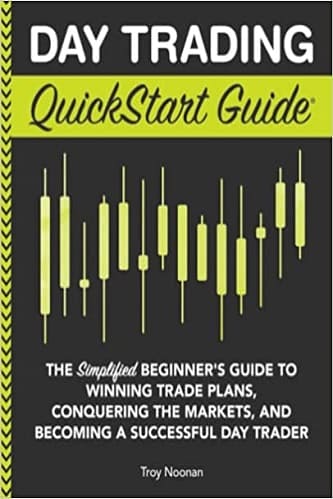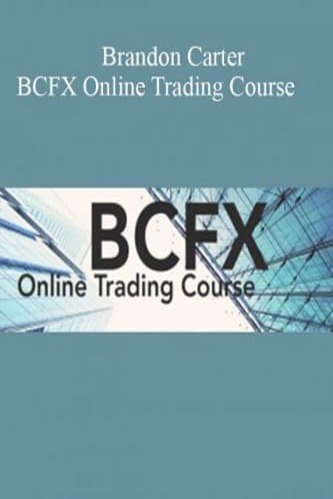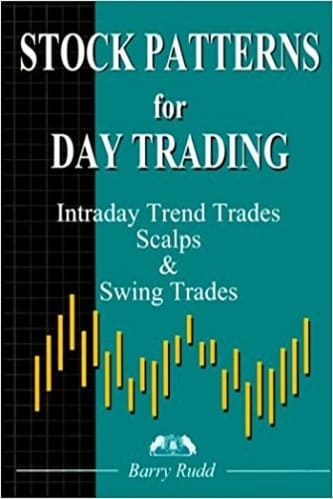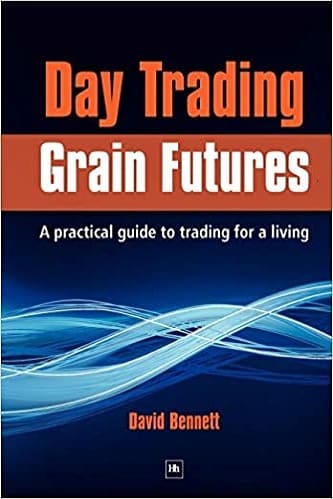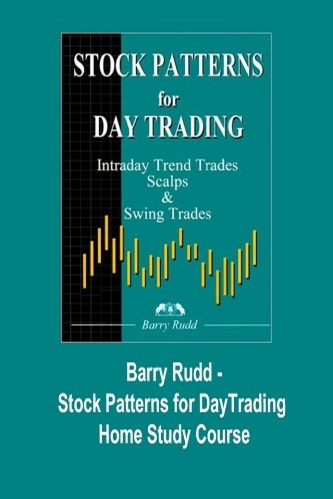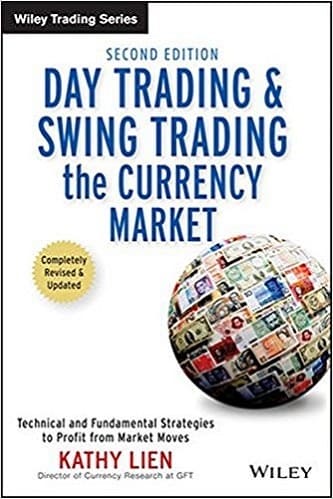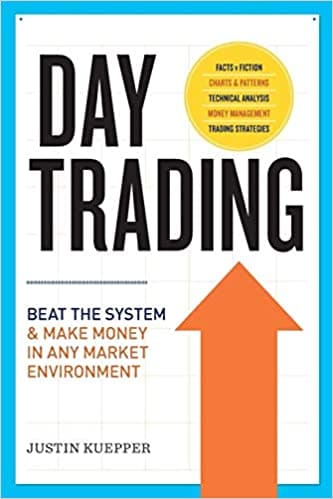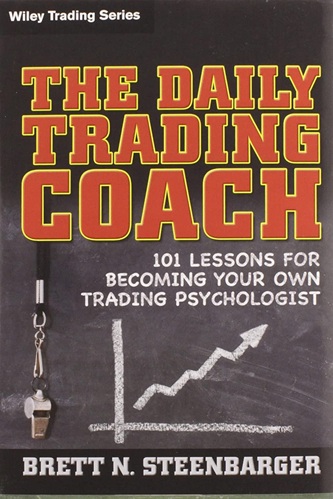Day Trading QuickStart Guide: The Simplified Beginner’s Guide to Winning Trade Plans, Conquering the Markets, and Becoming a Successful Day Trader
| Author(s) | |
|---|---|
| Format |
|
| Pages |
328 |
| Publication Year |
2020 |
Day Trading QuickStart Guide smashes the myth that successful day traders are math experts, careless risk junkies, or compulsive gamblers. Using the tactics enclosed in these chapters, you’ll learn the exact skills needed to find real success while keeping your risk to an absolute bare minimum. Author Troy Noonan is a professional full-time trader and day trading coach with over 25 years of experience. The original ‘Backpack Trader’, Noonan has helped thousands of students in over 100 countries become successful traders using the exact methods and strategies shared in this book. Low-cost trading platforms, the ability to trade from anywhere at any time, and the comprehensive education you’ll receive in Day Trading QuickStart Guide means that there has NEVER been a better time to learn how to day trade.
Author’s Note:
Chapter 1, “Challenges and Rewards,” lays the foundation for part I, “Is Day Trading Right for You?” All aspiring day traders must come to terms with the fact that they are attempting to accomplish something that has a high failure rate. The biggest obstacle to success is human emotions. The fact is, human beings make terrible traders, and the road to successful trading often involves changing the way we think. Chapter 2, “Why Most Day Traders Lose,” continues the conversation from chapter 1 and provides a complete list of the characteristics possessed by winning traders and the traits of many losing traders. Two characters are introduced: Harvey the engineer and Trisha the truck driver. Only one of them has the characteristics needed to win at day trading.
Chapter 3, “You Must Have an Edge,” begins with a discussion of the ins and outs of today’s financial markets, which some people consider to be random and impossible to beat. However, there are many examples of investors and traders that have consistently achieved positive results. The key to success is almost always a process of finding a statistical advantage or, as many call it, an edge. Chapter 4, “Getting Started: Self-Evaluation,” encourages readers to look at their own personal situation and determine if day trading makes sense given their specific lifestyle, objectives, and longer-term goals. It also seeks to help answer the question about how much money is needed to day trade. The chapter concludes with the quintessential question, Why do you trade? Although the answer might seem obvious, for many people it is not.
Chapter 5, “Choosing What to Trade,” explores the various investment types: futures, forex, stocks, options, and ETFs. It is a primer for those without a lot of prior knowledge or experience in trading. Key futures markets are highlighted and explained, along with the ticker symbols and sizes of the optimal contracts to trade. The chapter also explains how forex positions—another interesting market for day traders—can be traded in various sizes, from small to large. Chapter 6, “How Markets Work,” begins part II, “The Foundations of Day Trading,” by looking at the market from a technical viewpoint: market cycles, trends, and trading ranges. The chapter concludes with a look at chart patterns for day traders and reveals the best times of day to trade various markets.
Chapter 7, “Charting,” offers a primer on basic techniques that fall under the umbrella of technical analysis. The various chart types—bar, candlestick, range bar—are explained in detail. The reader will learn how to identify potential trading opportunities using tools like support/resistance, trendlines, and Fibonacci numbers. The final section of the chapter explains how to analyze markets over different time frames and which time frames are most appropriate for day traders. The discussion of technical analysis continues in chapter 8, “Technical Indicators.” Here, the reader is introduced to charting platforms—which are essential to day trading—and a variety of indicators that are available with almost all charting packages today. Examples include MACD, Bollinger Bands®, and the Relative Strength Index.
Chapter 9, “Types of Trades,” offers examples of trading opportunities that present themselves based on the previously described technical tools and goes one step further by explaining what day trading strategies are best suited for different setups. Here the reader gets a taste of what is involved in trading real markets, including the ins and outs of order entry.
Chapter 10, “The Big Chapter – Trading in Action!” offers a series of examples of real trades based on my playbook. How do I trade a market that has been moving higher, but seems ripe for a move lower? What if a market has been rallying hard and I expect the move to continue; what are my best day trading strategies? How do I set targets for each of my trades and how do I limit my potential losses?
Chapter 11, “To Be or Not to Be a Winning Trader,” begins to answer the key question why trade? by taking a deep dive into the Power of Why. Another key question, how do I make money? is partly answered by the Power of the Tradeplan. Then the reader is introduced to the idea of the Power of Foundation; just as they would not build their house on a pile of sand, the day trader needs to build a sturdy infrastructure before risking real money. Chapter 12, “Wait! Stop What You’re Doing,” covers the next three powers. The Power of Quitting explains how to avoid losses by staying true to the tradeplan. The Power of Numbers explores further the idea of building a system with a statistical advantage or edge. The Power of Compounding is critical in achieving longer-term goals, because it is through this concept that day trading accounts can grow from small to massive.
Chapter 13, “Plan Your Trade and Trade Your Plan,” walks through the different approaches to the markets. The Power of Mechanical Rules explains how some trading systems are developed with hard rules that must be followed to the letter. The Power of Dynamic Setups adds an element of flexibility that allows day traders to adjust to changing market conditions. And the Power of Structure emphasizes the importance of using tools that visually present the trades in a clear and concise way. The remaining three powers are covered in detail in chapter 14, “Taking Control,” but it’s more about learning how to let go of the things that we cannot control. That’s the Power of Surrender. The Power of Lifestyle holds important lessons on structuring your day trading so that it is balanced with the other things that are important in your life: family, free time, and other goals. Finally, the Power of CEO helps to give aspiring day traders a sense of the big picture—it’s not one or two transactions or trades that matter, but rather how you run your business.
Chapter 15, “Looking Inward and Moving Forward,” begins part IV, “A Step-by-Step Guide to Trading Success,” by outlining a 10-step action plan that can be followed to move from using “practice” money to trading with real money. I introduce a metaphor called the three-legged stool, which outlines the first three steps of the 10-step action plan: methodology, money management, and psychology. The chapter concludes with the most important step for day traders: commit to making money. Chapter 16, “Proof of Concept,” moves the 10-step action plan forward by explaining proof of concept, which is the key element in determining if a trading approach will succeed. Creating a tradeplan is an essential aspect of establishing proof of concept. Readers learn how to create and backtest the trading strategies that are used within the tradeplan. The importance of properly using a trading simulator—a process not unlike when a pilot learns to fly in a virtual environment—is explained as well. Chapter 17, “From JV to Varsity and Beyond,” is required reading for anyone who wants to trade real money, because, as it happens, “Trade with Real Money” is step 8 of the 10-step action plan. Once you know how to trade in smaller sizes, you can graduate to trading full-risk positions (typically around 2% of available trading capital). As you build your business, the next step is to promote yourself to CEO, and that’s when you begin paying yourself from trading profits. It doesn’t end there, however, because successful day trading over the long term involves steady investments in research and development—that is step 10 and how you stay ahead of the competition.
Contents:
- CHALLENGES AND REWARDS
- WHY MOST DAY TRADERS LOSE
- YOU MUST HAVE AN EDGE
- GETTING STARTED: SELF-EVALUATION
- CHOOSING WHAT TO TRADE
- HOW MARKETS WORK
- CHARTING
- TECHNICAL INDICATORS
- TYPES OF TRADES
- THE BIG CHAPTER – TRADING IN ACTION!
- TO BE OR NOT TO BE A WINNING TRADER
- WAIT! STOP WHAT YOU’RE DOING
- PLAN YOUR TRADE AND TRADE YOUR PLAN
- TAKING CONTROL
- LOOKING INWARD AND MOVING FORWARD
- PROOF OF CONCEPT
- FROM JV TO VARSITY AND BEYOND
Day Trading QuickStart Guide: The Simplified Beginner's Guide to Winning Trade Plans, Conquering the Markets, and Becoming a Successful Day Trader By Troy Noonan pdf

